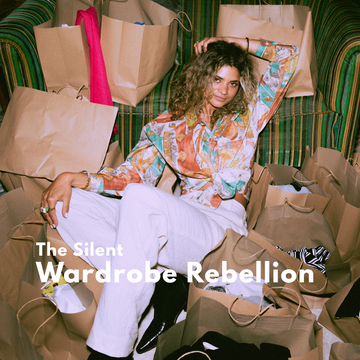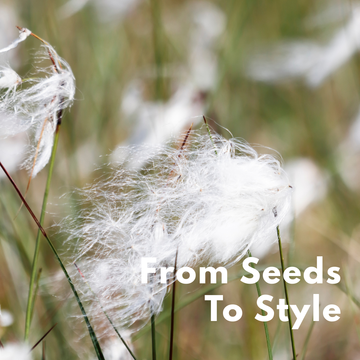Post by Omoshalewa serifat Oke
The Ultimate Guide for Long-Lasting Wear
If you’ve invested in organic clothing, congratulations!!!
You’ve already taken a powerful step toward better skin, a cleaner planet, and smarter fashion, but owning organic garments is only half the equation. Proper care is what keeps them durable, breathable, and skin-safe.
Unfortunately, many people unknowingly damage their organic clothes with conventional washing methods. This guide, built from textile science and eco-laundry insights, teaches you how to clean, dry, and store your organic pieces the right way.
This isn’t just laundry advice. It’s a blueprint for preserving garment quality, skin health, and environmental values.
Why Organic Clothes Need Special Care

Organic fabrics like cotton, linen, hemp, and bamboo are free from synthetic coatings and chemical finishes. That makes them gentler on your skin, but also more vulnerable to:
-
Fiber breakdown from harsh detergents
-
Shrinkage due to hot water or dryers
-
Color fading from UV light or aggressive washing
Conventional fabrics often contain polyester, plastic coatings, or chemical stabilizers. Organic clothing doesn’t, and that’s a good thing, but it does mean you need to be more thoughtful in your laundry routine.
Step-by-Step on How to Wash Organic Clothes Correctly

Step 1: Read the Label Every Time
Even organic garments vary in weave, dye, and blend.
Always check:
-
Water temperature suggestion
-
Hand wash or machine-safe instructions
-
Drying method (flat, line-dry, or low tumble)
Step 2: Sort Carefully
Separate by:
-
Color (light, dark, bright)
-
Weight (delicate camis vs. heavier linens)
-
Fabric type (bamboo blends don’t mix well with denim)
Step 3: Use Gentle, Eco-Friendly Detergents
Choose detergents that are:
-
Fragrance-free
-
Non-toxic
-
Biodegradable
-
Free from optical brightener and enzyme
Avoid bleach, fabric softener, or traditional stain remover, they can strip organic fiber and irritate your skin.
Step 4: Wash in Cold Water
Cold water:
-
Preserves natural dyes
-
Prevents shrinkage
-
Saves energy
If you’re machine-washing, use a gentle or hand wash cycle. For delicate pieces, hand-washing in cold water with a mild soap is best.
Step 5: Avoid the Dryer When Possible
Heat is the enemy of organic fabrics.
Instead:
-
Lay flat to dry to maintain shape
-
Line dry in shade to preserve color
-
Tumble dry low only if necessary
Bonus: You’ll save on energy and your clothes will last much longer.
Smart Stain Removal for Organic Clothes
Got a spot on your organic shirt? Don’t panic. Avoid harsh stain removers.
Instead, try:
-
Baking soda paste for grease or oil stains
-
White vinegar and water mix for odor or mildew
-
Lemon juice and sunlight for natural brightening (only on white garments)
-
Castile soap for general surface stains
Always spot test before using a DIY solution on dyed fabrics.
Bonus Tips: Storage, Ironing, and Longevity
Storage:
-
Store in a cool, dry space
-
Use cotton garment bags instead of plastic
-
Add lavender sachets or cedar blocks to repel moths naturally
Ironing:
-
Use low to medium heat
-
Always iron while slightly damp or use a pressing cloth
-
Avoid synthetic starch sprays
Sustainability Bonus: Washing less often and at lower temperatures can reduce your carbon footprint by up to 40% over a garment’s life.
Top FAQs: Organic Fabric Cleaning
Q: Can I dry clean organic clothing?
A: Only if the cleaner uses non toxic, Green Earth or wet-cleaning methods. Traditional dry cleaning uses harsh petrochemicals.
Q: How often should I wash organic clothes?
A: As little as possible. Over washing wears out the fibers. Only clean when necessary.
Q: Are natural dyes more prone to fading?
A: Yes. Protect your clothes by air drying in the shade and using mild detergents
Conclusion
A Gentle Routine for Stronger Clothes and Safer Skin
Caring for organic clothing isn’t complicated. it’s conscious. It’s a reflection of the same values that inspired you to buy organic in the first place:
- Health over convenience
- Sustainability over shortcuts
- Quality over quantity
By treating your organic clothes with intention, you’re investing in their longevity and in a healthier lifestyle for yourself and the planet.
References
Textile Exchange. "Organic Cotton Market Report 2024"
Environmental Working Group. "Guide to Non-Toxic Laundry"
GOTS – Global Organic Textile Standard. "Textile Processing and Care"







